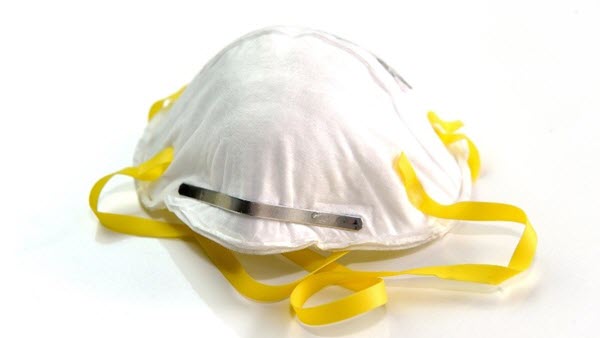Researchers Found Even Lower-Performing Masks Were Protective
If you're a MAGA, don't even bother reading (that is, if you can)
By Fid
Thompson
Any common face mask provides significant protection against the virus that causes COVID-19, but N95 masks are most effective at slashing the amount emitted by infected people, according to a University of Maryland-led study released Wednesday.
So-called “duckbill” N95 masks scored highest in the
study, which measured the exhaled breath of participants who were tested both
masked and unmasked to measure comparative outputs of SARS-CoV-2. The
inexpensive masks, which have two head straps and a horizontal seam, captured
98% of exhaled virus, according to the study published in eBioMedicine.
The researchers also found that—in what might come as a
surprise to many—cloth masks outperformed the specific brand of KN95 mask that
was tested. Surgical masks brought up the rear in performance out of the four
types, but even they blocked 70% of the virus, the tests showed. (To reflect
the general public's use of masks, study volunteers were not fit-tested for
their masks or trained how to properly wear them.)
“The research shows that any mask is much better than no mask, and an N95 is significantly better than the other options. That’s the No. 1 message,” says the study’s senior author, Donald Milton, a professor of environmental health and a global expert on how viruses spread through the air.
The results also suggest that N95 masks, also known as
respirators, should be the standard of care in nursing homes and health care
settings when respiratory viral infections are prevalent and transmission risk
is elevated, the researchers said.
The study by the School of Public Health’s Public Health AeroBiology Lab (PHAB Lab) began
in May 2020, shortly after the onset of the COVID-19 pandemic, focusing on
masks as a tool to control the spread of the virus from the source, i.e. the
infected person, rather than as a means of protection from virus particles in
the surrounding air.
Researchers asked volunteers with COVID-19 to breathe
into a contraption known as the Gesundheit II Machine, developed by Milton and
colleagues to measure viruses in exhaled breath. Participants breathed into the
machine for 30 minutes at a time and also repeated the alphabet, sang “Happy
Birthday” and even repeatedly shouted “Go Terps!”—first with masks on, and then
without.
“Data from our study suggests that a mildly symptomatic
person with COVID-19 who is not wearing a mask exhales a little over two
infectious doses per hour says first author Jianyu Lai, a postdoctoral
researcher at the PHAB Lab. “But when wearing an N95 mask, the risk goes down
exponentially.”
The study includes coauthors from UMD’s A. James Clark
School of Engineering and the World Health Organization Collaborating Centre
for Infectious Disease Epidemiology and Control at the University of Hong Kong.
The duckbill N95 blocked 99% of large virus particles and 98% of small ones, thanks to the design’s tight seal, powerful filter and large air space for breath to circulate, Milton said. Perhaps surprisingly, widely used KN95 masks—sometimes billed as nearly equaling N95s in effectiveness—were no better than a variety of cloth masks or surgical masks.
The common brand of
KN95 masks tested leaks more air than duckbills or other studied masks because
they don’t conform to the face well, Milton believes. That flaw is compounded
by a powerful filter with more flow resistance that pushes air—and virus
particles—out of the mask at the sides instead of through the filter.
Cloth masks also outperformed both KN95 and surgical
masks. Milton theorizes that cloth variants were the second-most effective
masks tested because of greater coverage that wraps around the face and gives a
better seal than either KN95 or surgical masks. Flow resistance is also lower,
allowing breath to pass through rather than around the filter.
Limiting the amount of viral particles in the air is a
key way to control highly contagious respiratory viruses in general, Milton
said. This is especially true for COVID-19, with the Omicron variant in
particular breaking through the immunity people developed from vaccinations or
prior infections. Both Milton and Lai hope that their findings will inform
health policies going forward, including when combatting potential outbreaks
like bird flu or even the common flu.
“Our research shows definitively why it’s so important to
have non-pharmaceutical responses like wearing masks, and why we need studies
like this to illuminate which masks are most effective,” says Milton.
